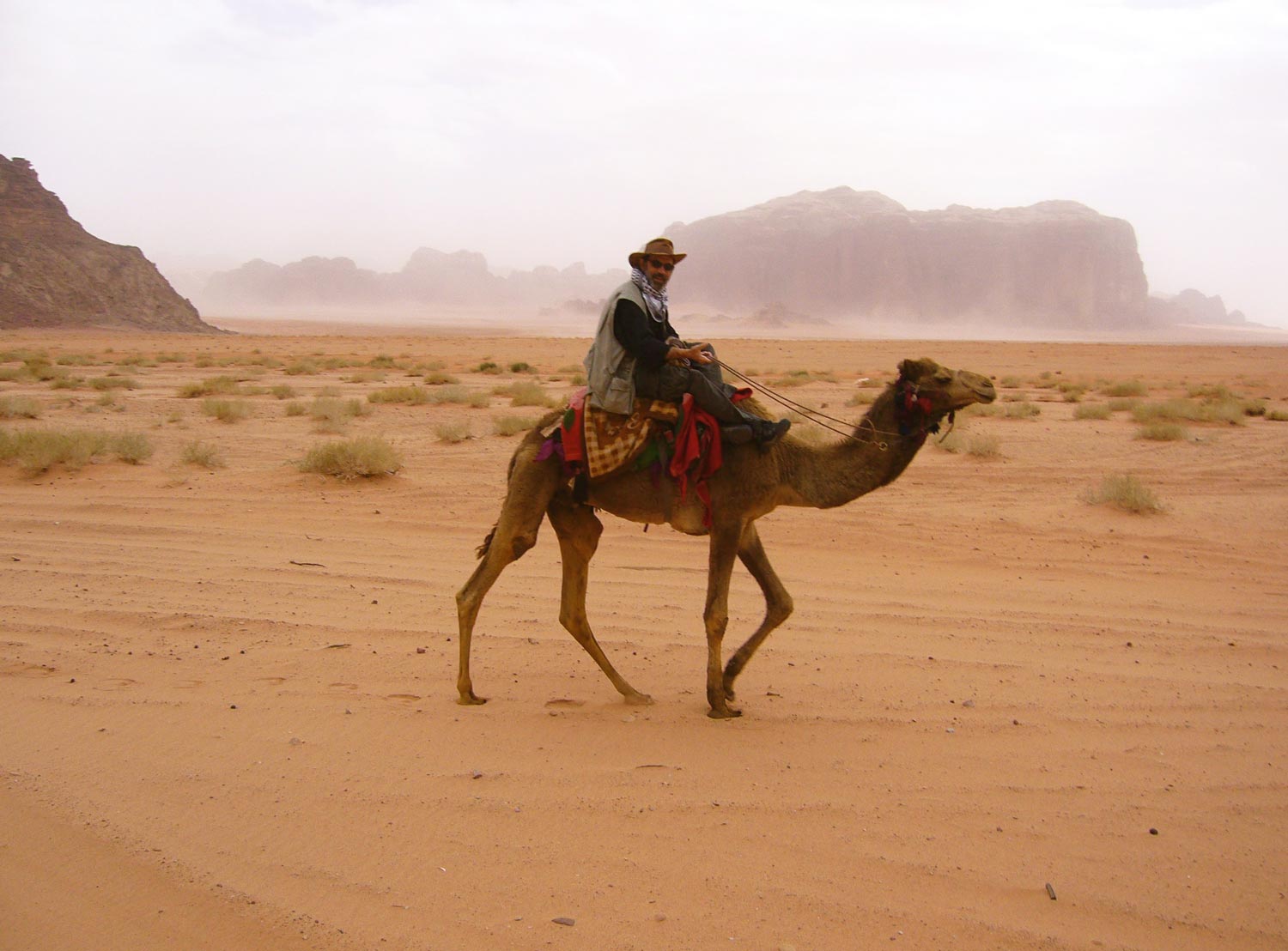The summer after my first marriage ended, I needed to get away. With Jericho properly attired and safely tethered in a kennel behind me, I throttled up my Honda Sabre for a month on the road, riding from California through Colorado to New York, up into Canada and back.
We studiously avoided Interstates, choosing instead the secondaries that were once the traveler’s only option. I especially remember the smells—grazing cows, cut grass, wet earth.
I remember smiling my way along twisty roads and meandering streams. I loved the old-school inefficiency of downshifting for each town and rail crossing, and I cherished chance conversations at gas stations, cafes, and the campsites where I’d pitch my tent each night.
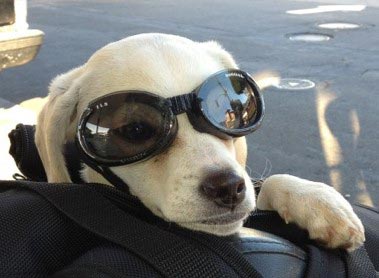
Jericho, Bruce’s companion during his motorcycle trip
I call it 9,000 miles of wind therapy. Only later did I learn there’s a name for it: slow travel. Contrary to what the phrase might imply, it’s not about speed. What is slow travel?
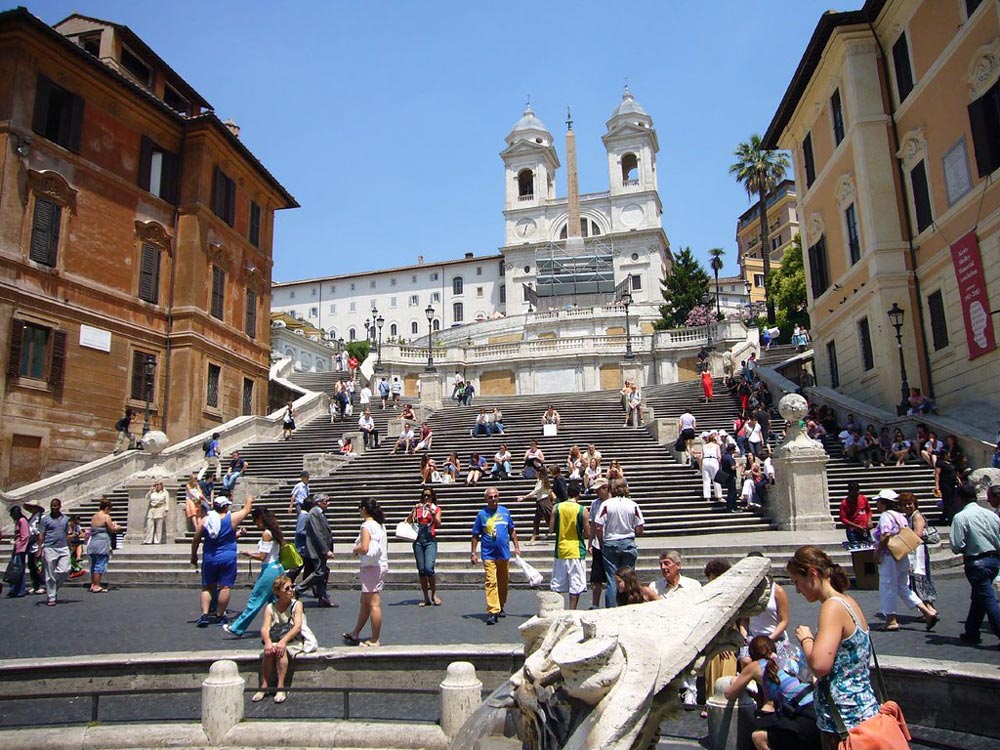
Spanish Steps in Rome
Ronald Mcdonald invades Rome
Slow Travel is one dimension of an international Slow Movement that dates back to the 1980s when hundreds of Italians, led by Carlo Petrini, protested the opening of a McDonald’s at Rome’s Spanish Steps. Sadly, the protest—against industrialized food and standardized taste—failed to prevent Ronald McDonald from defiling an Italian national treasure.
On the bright side, a global movement was born.
Slow Movement guru Carl Honoré begins his book, In Praise of Slowness, by defining his terms.
“Fast is busy, controlling, aggressive, hurried, analytical, stressed, superficial, impatient, active, quantity-over-quality. Slow is the opposite: calm, careful, receptive, still, intuitive, unhurried, patient, reflective, quality-over-quantity. It is about making real and meaningful connections—with people, culture, work, food, everything.”
On a visit to Italy, he heard Carlo Petrini (the just-noted Slow Food guy) say
“Being Slow means that you control the rhythms of your own life.”
How that would work for farmers and herders—for so many people whose daily rhythms are set by sun, season and fertility—isn’t clear to me. But for anyone embedded in industrialization and urbanization, anyone living in what Friedrich Nietzsche called an age “of indecent and perspiring haste,” this kind of slow sounds compelling.
The art of becoming slow
What would happen if we heeded Nietzsche’s call “to take time, to become still, to become slow”? Like him, we would write with greater care and read more deeply.
We could send our kids to slow schools (where real life is part of the curriculum), or practice slow shopping (in hipster Cusco, for example). We could learn to spend slow money (promoting economic sustainability, community resilience, small food enterprises and organic farms) and even organize slow cities (marked by a slower, greener pace).
And we would practice slow travel.
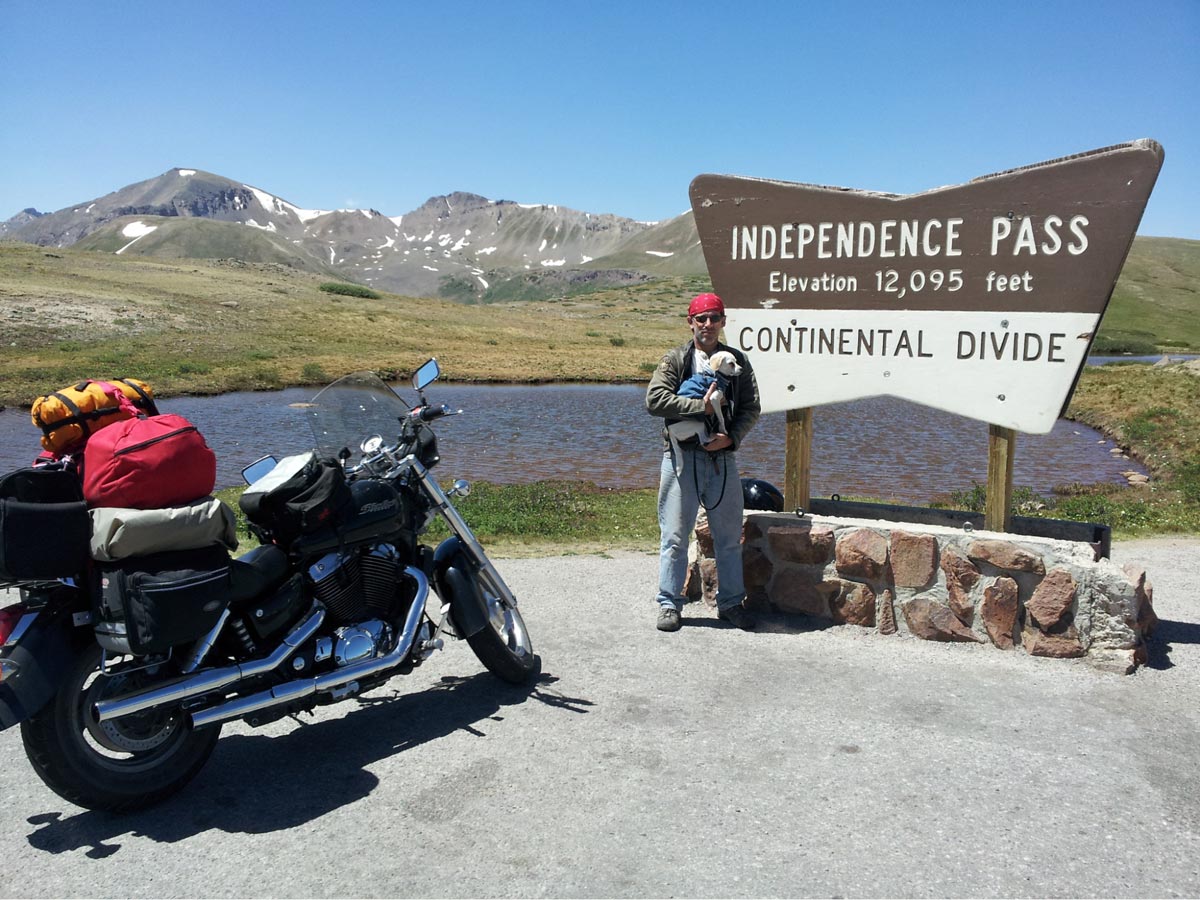
Bruce and Jericho posing at the Independence Pass in central Colorado

Alessandra speaking Quechua to a Mamita in Calca market
More markets, less malls
What do we mean by slow travel? What was it about my cross-country, back-road motorcycle trek that made it so therapeutic?
Slow Travel is not a mode of transport, or even a speed. It is a mindset. It feels no urge to see all the sights. It is happy with fewer destinations, and happiest when they include local people—masters, teachers, women, artisans, storytellers—trustworthy guides to hidden treasures and traditions.
Slow travelers are content to leave some places unexplored, while getting to know other places well. They avoid hop-on, hop-off bus tours. Like the plague. And prefer to walk, cycle, or ride public transport with the locals. More back roads and fewer highways. More trains and less planes. More markets and less malls.
Slow Travel says no to relentless movement and yes to thoughtful cultural engagement.
It means paying attention, taking fewer Selfies, making improbable friends and meeting their families, and building relationships that continue after returning home.
Arriving from below, not from above
Our shared love of cultural engagement has inspired us to create a portal called CURIOS as a trusty companion for Slow Travelers in Peru. It’s full of local, authentic experiences that we have personally curated.
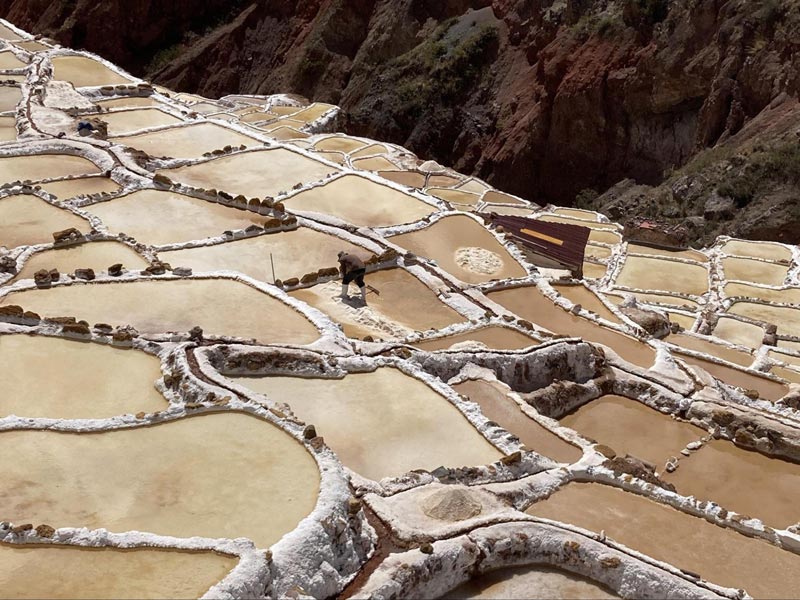
Mara’s Salt Mines
Let’s say you want to explore the legendary, pre-Inca Maras Salt Mines, not far from Cusco city, a remarkable site visited by thousands each year. Most visitors are Fast Travelers: they arrive at the site by tour bus or minivan, and proceed to the viewpoint where they photograph the meticulously-preserved, centuries-old evaporation pools.
Their route back to the parking lot passes a line of stalls where eager women sell Maras salt in bags and shakers. Fast Travel reduces these locals to two dimensions. They are simply vendors, not mothers or wives with families to support and stories to tell.
For fast travelers, there is little time to be curious. “How many salt pools belong to your family? Which pools are yours? How long have they been in the family? How long does it take for a pool to evaporate? What happens to salt pools during rainy season?”
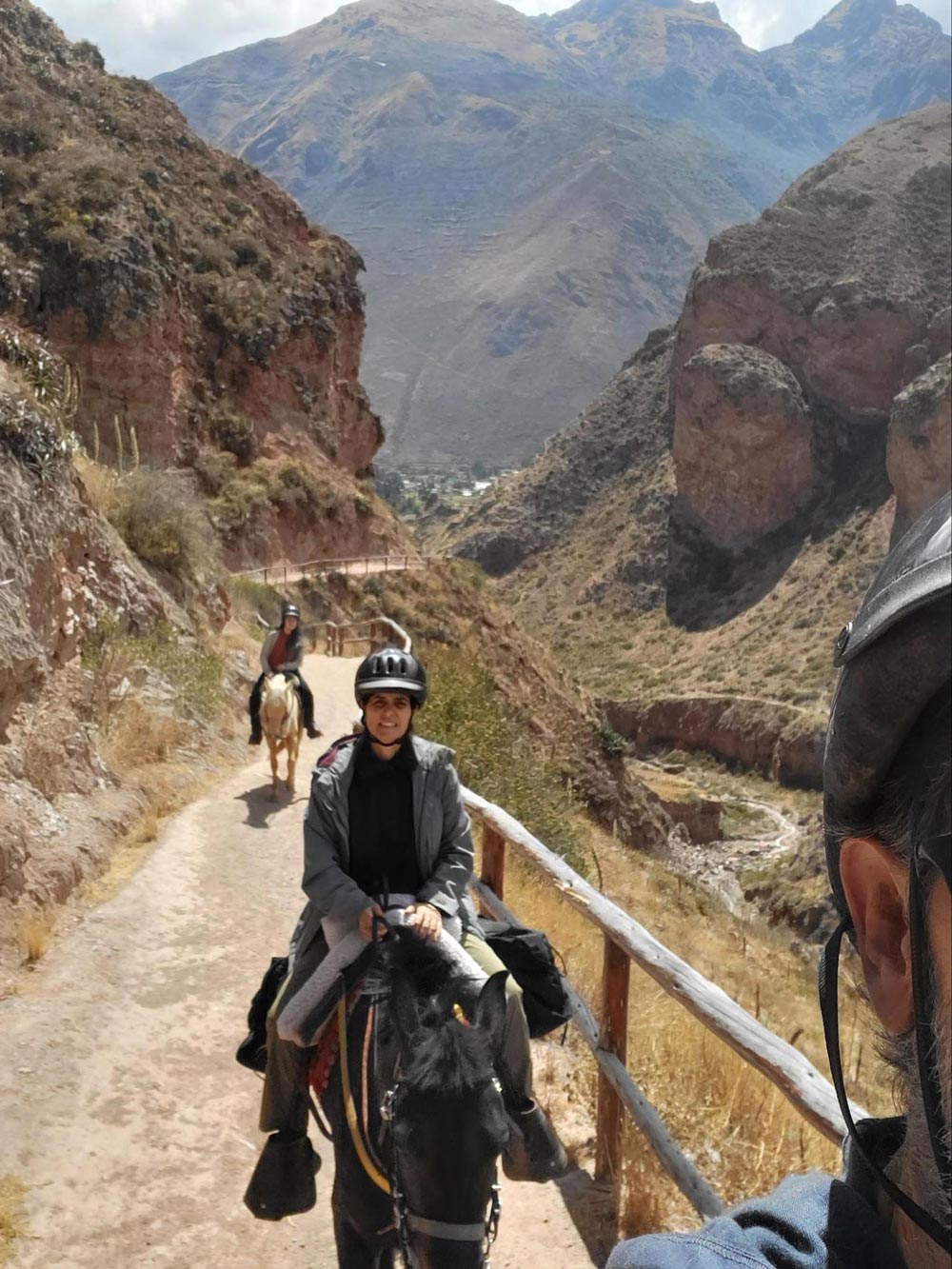
Alessandra horsebackriding to Maras
Things are different if you travel slow. You might arrive to Maras on horseback, as we did. Our slow adventure began with Kyd, an expat equestrian who long ago made her home in the Sacred Valley near Urubamba. After we bonded with Kyd’s horses and mounted up, our guide led us along charming paths past traditional adobe homes, some humble, some grand, and along the wending Urubamba river which we crossed by bridge to begin our ascent to the Salt Mines.
Arriving slowly from below, rather than quickly from above, means you pass all 3,000 salt pools, not just the ones visible from the tourist overlook. Dismounting your horse, you linger. Your eyes trace the channels of saline water and you watch workers rake fresh salt into piles, like the man you see in the picture above. . . which picture I took without falling off my horse or dropping my phone. Given my utter lack of equestrian expertise, you should be impressed.
Fast or slow travel, tourist or pilgrim?
I could describe other experiences of slow travel like, say, a local market adventure with Diego and Ana Lucía where you buy what you need to compose a flavorful Peruvian dish like Lomo Saltado. These two foodies—one’s a chef and one’s a food engineer—very obviously love what they do. They don’t cook, they create. And you co-create with them. Both memory and recipe return home with you.
It seems to me the contrast between Fast and Slow Travelers aligns with the difference between tourists and pilgrims. Fast-moving tourists are “enthusiastic participants in the culture of mass consumption,” says Thomas Bremer. They expect their travel experiences to be worthy of their time and energy.

Diego cooking Lomo Saltado
Pilgrims and slow travelers, by contrast, travel not to consume but to be consumed or, rather, transformed—to become worthy over time of the worlds and peoples they encounter. Slow Travelers cherish time for conversation and welcome mutual discovery.
One might say theirs is a spiritual quest—a pilgrimage—in which they hope not only to grow in wisdom and gratitude but also perhaps to contribute to the wellbeing of others.
In The Art of Pilgrimage, Phil Cousineau describes pilgrimage as “a journey of risk and renewal.” The traveler, he says, must long for a taste of mystery, a touch of the sacred, a transformation.
Are you a slow traveler?
What kind of traveler are you? Do you control your own travel rhythm? Do you read up on your destination before you arrive? Do you prefer to linger in a few places rather than race through many? Do you cherish chance encounters with locals? Are shopkeepers and taxi drivers two-dimensional objects, or are they subjects with families to love and stories to tell? Is travel simply one more thing to consume, or do your travel experiences make you a better person?
When you engage in slow travel you are changed, humbled, challenged, transformed.


